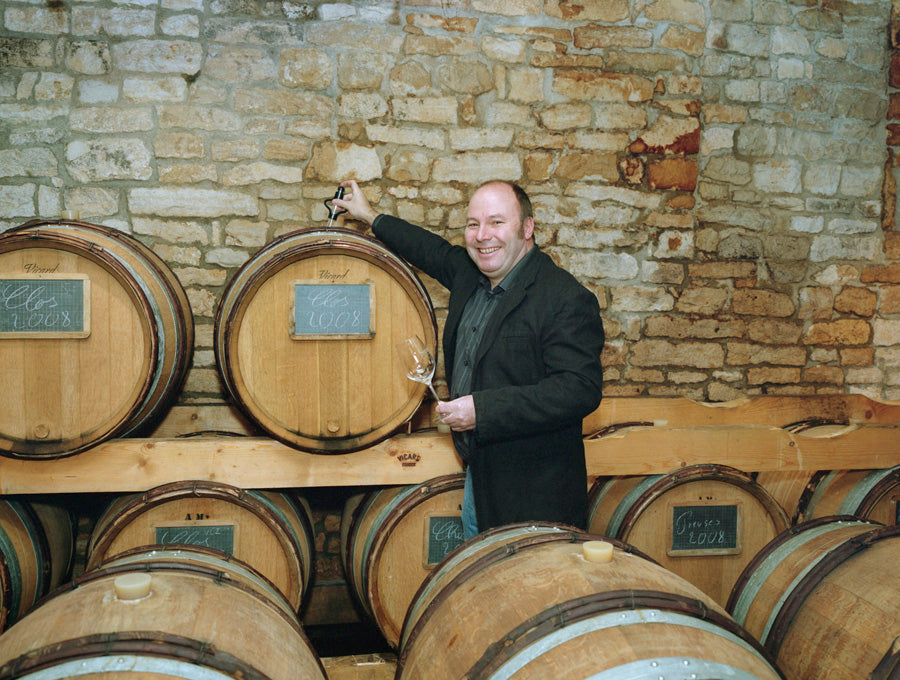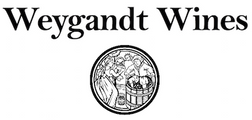
Ask the Wine Shop: What Does a Wine Importer Do?
If you’ve shopped at Weygandt Wines before (and we suspect you have, if you’re reading this page), you’re in on one of the best kept secrets of buying wines as a consumer: shopping by importer.
Wines that are sourced from outside the United States must be brought in by a wine importer. These individuals and companies are important conduits between you and non-American producers. They always on the lookout for products that their audience will find interesting, following the pulse of emerging wine regions and producers.
More often than not, the producers an importer represents will reflect the preferred style and approach of the importer. Chances are, if you enjoy one or two wines brought in by a particular importer, you’ll probably enjoy other wines they represent too. Fortunately, there’s an easy way to follow the breadcrumbs to more wines that you’ll like, and it’s listed right on the back of every bottle: Imported by Weygandt-Metzler.
Many of you already know that the “Weygandt” stands for Peter Weygandt, whose name also adorns the sign of our Cleveland Park store. But how does he find the producers behind the wine in your glass?
Getting to the Source: The Land and the Grapes
Importers find new producers in all manner of ways, from attending trade shows to scouring brochures to getting local recommendations. Peter might also add lots and lots of driving.
Ideally, importers will visit vintners at their place of production. This is not only to taste broadly but also to see how things are worked in the vineyards and the cellar, as well as to get a better sense of the region and the landscape.
Growing up in an agricultural family in the Midwest, Peter feels a strong connection with the land. So, it’s no surprise that he seeks out producers who share a similar connection—producers who are deeply rooted in the earth and are out working the vineyards themselves.
This tends to skew heavily toward smaller producers implementing conscientious approaches. As he explained to Levi Dalton of the “I’ll Drink to That” podcast in 2013, this also means looking for producers who use natural techniques. Admittedly, this can mean a variety of different things—sustainable, organic, or biodynamic and any combination thereof.
But the foundation of whatever approach a producer uses is a great growing process and more often than not, great producers are using the same techniques. At the end of the day, the work is done by the growers in the vineyards themselves, with their hands.
Each vintage has its own challenges and opportunities, something Peter is intimately familiar with from his own agricultural background: “Every year, nature deals producers a different hand. Every is not going to be the same.”
But how producers respond to these challenges reveals that mysterious intersection between nature, skill, and instinct: “Great producers are always able to achieve balance, even during challenging vintages.”

From the Vine to Your Glass
Once the right producer is found and terms are agreed, the wine eventually gets shipped to the United States.
Much ink (and probably wine and tears) has been spilled over the US three-tier alcohol distribution system, so this will be more of a quick and dirty snapshot of how Weygandt Wines and Weygandt-Metzler Importing fit within that system.
An outgrowth of the 21st amendment ending prohibition, the system is tended to prevent sole ownership across all the tiers. This means that no business can engage in all three tiers of activity. Additionally, each state is allowed to enact its own regulations about how alcohol is distributed and taxed in its territory.
Once a producer’s wine hits US shores, the importer (first tier) will work with a distributor (second tier) to get the products to restaurants and retail outlets (third tier) and, eventually, into the hands of consumers. Distributors can work nationally, regionally, or even just within a single state.
The sales team at Weygandt Selections takes on the role of distribution in New York, while also working with various distributors across the country to bring hand-selected Peter Weygandt wines to your shelves and menus.
For the Love of Wine
It’s not common to see a retail store that’s directly associated with a wine importer. This is in part due to the three-tier system and what business individual states will allow importers and distributions to engage in.
But the rise of more direct-to-consumer models may improve these odds in the future. It’s also possible that a Biden administration executive order to review competition in the alcohol industry will change landscape of the three-tier system.
No matter what happens (or doesn’t happen) in these areas, the role of importers is likely to stay strong. Most of us don’t have the time or the credentials to visit dozens—or even hundreds—of producers to seek out best options a region has to offer.
Although Peter, somewhat disparagingly, classifies himself as a “glorified prospector,” he also admits that he finds the wine business exciting because its changing every day—there’s always a new producer to meet, a new generation taking over an estate, or a property that is sold.
At the end of the day, it’s about making connections with people who feel similarly about wine, whether it’s a grower-producer, a sommelier, or a retail customer. “Tasting exciting wine means something to a lot of people.” We couldn’t agree more.
--------------------
Do you have other questions about wine that we can answer? Send your “Ask the Wine Shop” questions to valerie@weygandtwines.com and you might be featured on the Weygandt Wines blog.

